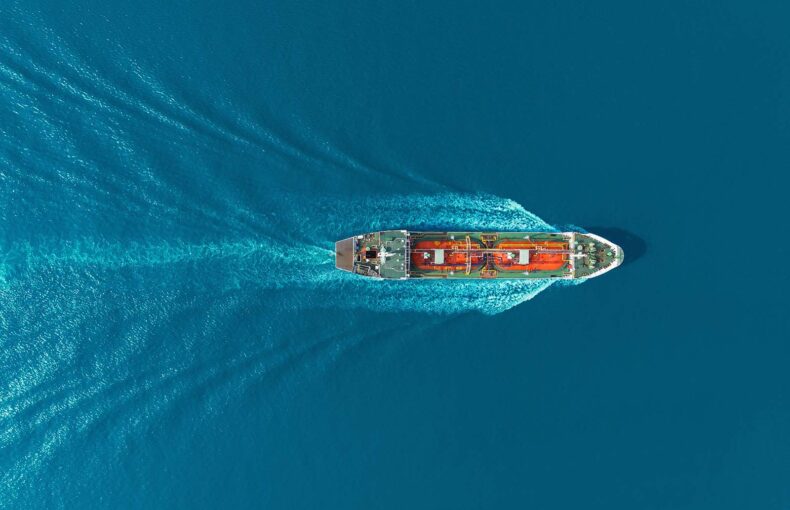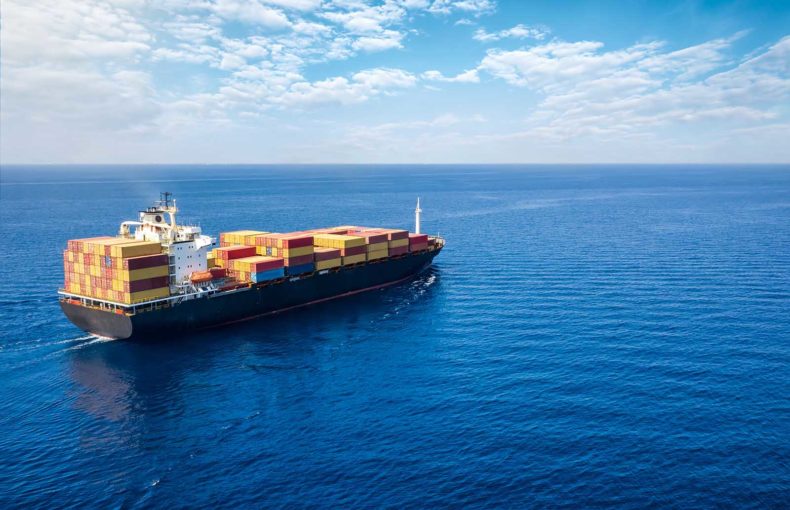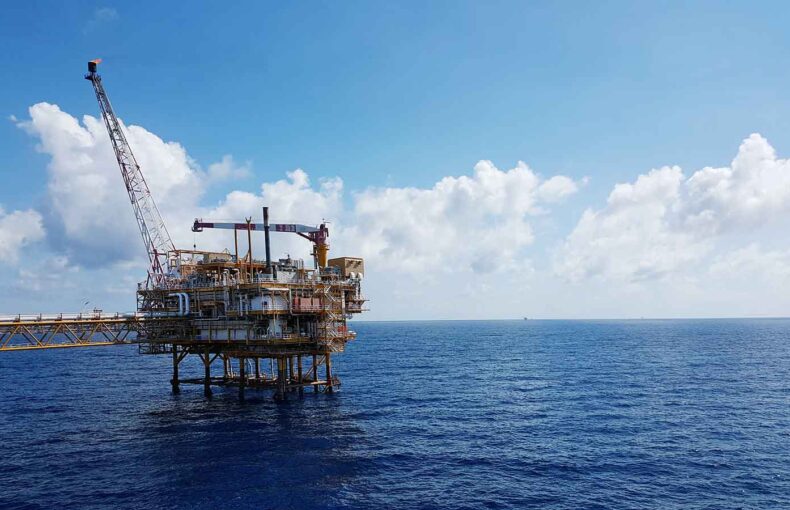Vessel Tracking & Analytics: The value of AIS today and tomorrow
The uses for AIS data have flourished recently making AIS much more than a tool for collision avoidance. AIS data is now used to provide transparency in shipping, track global commodities, and more.
Supply chain disruptions and images of ships waiting outside of the Port of Long Beach pushed AIS data into the spotlight recently. The automatic identification system, or AIS, transmits a vessel’s position. The International Maritime Organization requires vessels to broadcast their position with AIS to avoid collisions. Ground stations and satellites collect this information which allows vessels to be tracked across our oceans today. The uses for AIS data have flourished recently with the adoption of digitalization in the maritime industry. AIS is no longer a tool just for collision avoidance. It is used to provide transparency in shipping, be more adaptable to market conditions, and track global commodities.
Last week several experts, including Spire Maritime’s Data Operations Manager Mark Deverill, discussed the growing influence of AIS data and analytics in maritime. The group of experts explained in detail the increasing demand for new, smarter solutions in the maritime domain. If you’ve been curious as to how data can be converted into streams of actionable intelligence for better decision-making and more efficient and transparent shipping, here are a few key takeaways from the discussion.
If you missed the discussion, you can watch it on-demand:
Transparency, adaptability, sustainability, and stability
The use cases for AIS data and analytics are seemingly endless. From assessing average speed relative to fuel consumption to vessel availability to monitoring the factors of supply and demand, AIS data is a useful resource for many challenges. Additionally, AIS data helps provide compliance support for IMO 2020 regulations, builds baselines for fuel consumption models, detects illegal fishing, and most recently, highlights port congestion providing the ability to monitor situations in real-time and offer opportunities to build stability. Creating a more sustainable and stable maritime industry has been a topic of conversation for many years and AIS has become a vital tool for moving closer to these goals.
AIS data and analytics democratized shipping and provides insights that were not available previously. There has been an extraordinary evolution of functionality for AIS data. Its usefulness has been a game changer over the last 15 years.
Spire offers a free ebook that details the many ways data can be used to optimize operations and run more efficient maritime businesses.
Evolving uses as the digitalization of maritime evolves
The global demand for goods is rising and AIS is helping with the distribution of shipping. It is fundamental for stability and helps prevent market manipulation while fueling the ability to respond effectively when markets change. AIS promotes market stability as its information provides data about what is happening on a voyage in real-time so challenges can be managed as events develop.
Currently, analytics are built around AIS. Ingesting this data is valuable for shipping, port logistics, freight forwarders, and more. AIS is global data that can provide insights into your own shipments, your competitors’ shipments, fleet availability, and more. AIS data is compatible with highly sophisticated algorithms that identify patterns and anomalies quickly and provide in-depth insights to allow organizations to operate with precision – which is highly desirable especially in tight markets.
“Operations today need to perform to a high level of accuracy and AIS has made an incredible difference in refining operations. Meeting port docking times and monitoring whether you are on time has become more important and AIS is vital to developing timing algorithms.“
Share on Facebook Share on Twitter Share on LinkedIn
Tracking packages and ships, everyone wants updates as to where their goods are
The ability to know where parcels are is a relatively new concept. This is indicative of the importance of shipping and transparency. The adoption of digital solutions is expanding and happening at scale and AIS is also a major factor in this emerging trend.
Market monitoring: the greater impact
Market monitoring is perhaps the least talked about use of AIS and it is growing at an exponential rate. Experts explained how AIS data could be more vital to supply chain stability than it is to shipping operations from a certain view: it adds efficiency to shipping, but it has revolutionized market monitoring.
The pandemic influenced the demand for maritime analytics and it has influenced the use of analytics from everything from vaccine rates to port wait times. As the pandemic took hold in China, for example, the world watched the downturn in maritime activities. As the pandemic spread across the world, data from the China outbreak was used to examine markets and shipping activities. This data was a sort of baseline model for the phases of the pandemic around the world. Predictions could be made based on the China outbreak and recovery for the rest of the world. We looked at China’s data to see how they coped, and then applied lessons and timelines to other countries and their outbreaks arose. AIS data was a big part of that analysis.
Data driven analytics in Maritime are growing and so is public awareness
AIS data in maritime has been used to create the next level of insights into what might happen next in terms of maritime operations. The pandemic helped drive this growth path that now looks at activities – like tanker traffic and cruise ship markets – and uses these real insights into what happened to determine what we might do to improve operations. Experts discussed these “ripple effects” that have become opportunities to improve analysis and make more accurate data driven decisions regarding market direction. A vast and deeper awareness came out of the pandemic analysis and it identified new paths to move forward.
The news today about delays and congestion at ports is an example of the “perfect storm” the pandemic delivered and the awareness of AIS data that resulted. A greater number of people know about maritime analytics and their effects on all of us.
The pandemic helped spread awareness about AIS and shipping which also led to a push for more analytics and deeper analysis. The situation accelerated the adoption of digitalization and accountability. AIS tells the world who you are, where you are, and where you’re going. Being on time and being efficient is shown by using AIS. There is a built-in accountability factor. It is assumed that people want global supply chain accountability and that they want to look at bottlenecks and find solutions. AIS helps a lot in this situation.
AIS in the future
AIS was developed as a safety tool. Then it evolved into a monitoring tool. The next evolution of AIS is still to be determined. VDES proposals are still in an early phase, but are showing promise. The messaging that comes with VDES will help with an exchange of information to run alongside AIS. Plans to expand it will take time to be realized and will require compliance standards.
The way forward appears to be more collaboration and more willingness to work across industries. This sense of collaboration creates a potential for fusing more data sources together for greater detail and more accurate insights across maritime. The end goal for the future of AIS data is to facilitate better solutions that work well for people and organizations. Radio frequency congestion on AIS remains a challenge and newer applications are examining ways to open up additional channels and utilize two way messaging to open up the amount of information being exchanged between ships.
Regardless of the future direction that AIS data and maritime analytics chooses, AIS has certainly solidified itself in the market and continues to evolve and adapt. It has also changed the way industry operates for the better – with a focus on transparency, adaptability, sustainability, and stability.
 Written by
Written by



